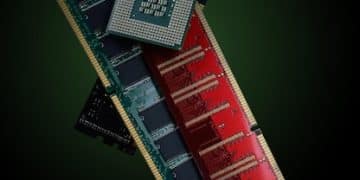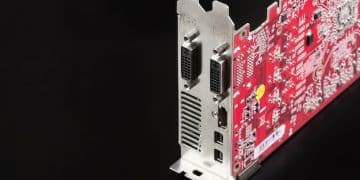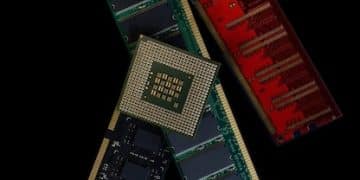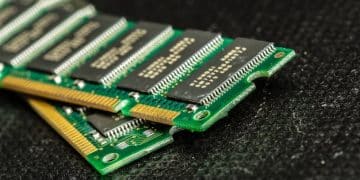Upgrade Your Gaming PC: A Comprehensive Guide
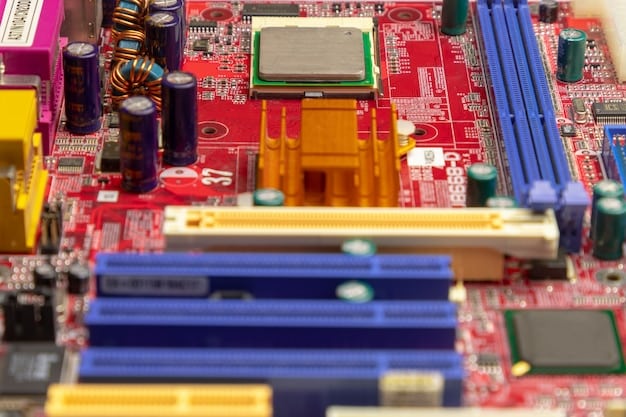
Upgrading your existing gaming PC involves identifying bottleneck components, replacing them with newer, more powerful hardware, and ensuring compatibility for enhanced performance and longevity.
Is your trusty gaming PC starting to show its age? Don’t despair! Upgrading your existing gaming PC can breathe new life into your system, allowing you to enjoy the latest games at higher settings without breaking the bank of a completely new build.
Determine if upgrading is right for you
Upgrading a gaming PC is a great way to extend the life of your system and improve its gaming performance. However, it’s important to first determine if an upgrade is the right choice for you.
There are several factors to consider, including the age of your system, the types of games you want to play, and your budget. By carefully evaluating these factors, you can make an informed decision about whether or not to upgrade.
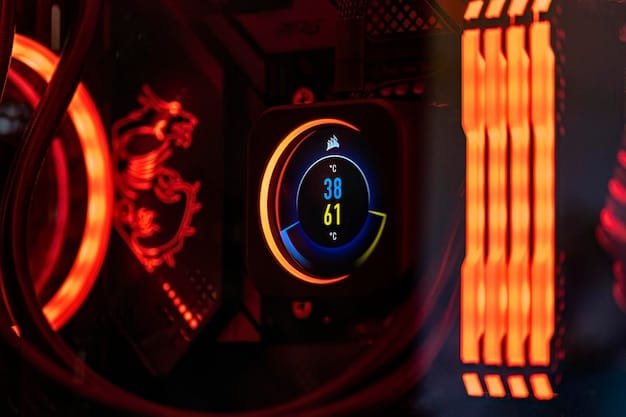
Assessing Your Current System’s Performance
Before diving into upgrades, it’s essential to understand your PC’s current performance limitations. This involves identifying which components are holding you back from achieving your desired gaming experience.
You can use benchmarking tools and in-game performance metrics to gather data on your CPU, GPU, RAM, and storage. Analyzing this data will help you pinpoint the bottlenecks hindering your system’s performance.
- Identify Bottlenecks: Use monitoring software to see which components are consistently at 100% utilization during gameplay.
- Benchmark Your System: Run standardized benchmarks like 3DMark or Cinebench to compare your system’s performance against similar configurations.
- In-Game Performance Monitoring: Enable in-game overlays to display FPS, CPU usage, GPU usage, and RAM usage while playing your favorite games.
By assessing your current system’s performance, you can make informed decisions about which components to upgrade for the most significant impact.
Identifying key components for an upgrade
Once you have determined that upgrading is the right choice, the next step is to identify the key components that need to be replaced. The specific components that you will need to upgrade will depend on the age of your system, the types of games you want to play, and your budget.
However, some of the most common components that are upgraded in gaming PCs include the graphics card, CPU, RAM, and storage.
Graphics Card
The graphics card is arguably the most important component for gaming. It’s responsible for rendering the visuals of the game, and a powerful graphics card can significantly improve your gaming experience. A new graphics card will improve your ability to run greater resolution and higher in-game settings.
When choosing a graphics card, it’s important to consider your budget and the types of games you want to play. If you’re on a tight budget, you can still get a good graphics card for playing older games or less demanding titles.
CPU
The CPU, or Central Processing Unit, is the “brain” of your computer. While the GPU handles the visually demanding aspects of gaming, the CPU is responsible for a lot of important, but unseen elements. While gaming it handles the artificial intelligence algorithms used by non-player characters, in-game calculations and simulations.
When choosing a CPU, it’s important to consider the number of cores and threads, as well as the clock speed. A CPU with more cores and threads can handle more complex tasks and processes simultaneously. The clock speed determines how quickly the CPU can execute instructions.
- Budget Considerations: Determine how much you are willing to spend on upgrading your PC.
- Game Requirements: Check the recommended system requirements for the games you play, but take them with a grain of salt and only use them as a reference point.
- Component compatibility: Ensure that any new components you want to get are compatible with the rest of your PC.
- Futureproofing: Buy the best components you can afford in order to delay more upgrades in the future.
Identifying the key components for an upgrade will significantly boost the overall performance of the gaming PC, providing a better gaming experience.
Preparing for the upgrade
Before you start taking apart your computer, there are a few things you need to do to prepare for the upgrade process. This will help to ensure that the upgrade goes smoothly and that you don’t damage any of your components.
First, make sure you have a clean and well-lit workspace. You’ll also need some basic tools, such as a Phillips head screwdriver, needle-nose pliers, and an anti-static wrist strap. Next, back up all of your important data.

Backup Your Data
Before making any hardware changes, it is crucial to back up all your important data. This includes your operating system, games, documents, photos, videos, and any other files you don’t want to lose.
You can use a variety of methods to back up your data, such as using an external hard drive, cloud storage, or a combination of both. Choose the method that best suits your needs and make sure to verify that the backup is complete before proceeding with the upgrade.
Gather Necessary Tools and Materials
To perform the upgrade, you’ll need a few essential tools and materials. These include a Phillips head screwdriver, anti-static wrist strap, zip ties, thermal paste, and a can of compressed air.
The Phillips head screwdriver will be used to remove and install screws on your PC case and components. The anti-static wrist strap will protect your components from electrostatic discharge, which can damage them. Zip ties will help you manage cables and keep your PC case organized. Thermal paste will be used to improve heat transfer between your CPU and cooler. And the can of compressed air will be used to clean dust and debris from your components.
Preparing properly can help prevent data loss and component damage. Following these steps can make for an enjoyable and successful upgrade.
Step-by-step guide to replacing components
So you have decided to make some upgrades to your gaming PC, but you are not sure where to start. No worries! This step-by-step guide will make the component replacement process go smoothly, and you will be back to gaming in no time!
As long as you are careful, mindful, and methodical, upgrading your gaming PC can be simple and rewarding. These steps will guide you through installing new RAM, CPU, and Graphics Card.
- Unplug your PC: Before you do anything, make sure the PC is completely powered down remove the power cable!
- Open the case: Open the side panel of the case to expose the components. Removing both makes the process easier.
- Remove the old component: Depending if you are replacing the RAM, CPU, or Graphics Card the removal process may be different. RAM is easy, simply press the clips at each side of the RAM. The CPU and Graphics card will have clips and screws. Unscrew and unclip being very careful of the pins on the CPU.
- Install the new component: Simply reverse the process of removing the old component and install the new one.
By following this comprehensive guide, you can confidently replace components in your gaming PC and unleash its full potential.
Software and driver installation
After you have upgraded your hardware, the next step is to install the necessary software and drivers. This will allow your computer to properly recognize and use the new components.
The specific software and drivers that you need to install will depend on the components that you upgraded. However, some of the most common software and drivers that you will need to install include the graphics card drivers, the motherboard drivers, and the chipset drivers.
Graphics Card Drivers
The first and foremost thing to do is update your graphics card.
Graphics card drivers allow your operating system to communicate with your graphics card. Updated drivers unlocks features and ensure compatibility with new games/software.
Chipset and Motherboard Drivers
These drivers are critical for the motherboard, improving performance, stability, and compatibility of installed components.
Updating drivers can offer better performance by optimizing data transfer and hardware interactions.
Troubleshooting common issues
Even with careful planning and execution, you may encounter issues during or after the upgrade. Knowing how to troubleshoot common problems can save you time and frustration.
One common issue is the computer not booting up after the upgrade. This could be caused by a number of factors, such as a loose connection, an incompatible component, or a corrupted BIOS.
Compatibility Issues
Mismatched components, such as incompatible RAM or CPU, can prevent your system from booting up or cause instability.
Always check compatibility lists and specifications before purchasing new components. Double-check that all components are properly seated. Research potential BIOS updates for compatibility enhancements.
Overheating
Newer, more powerful components can generate more heat, especially if the cooling solution is inadequate.
Monitor temperatures using monitoring software. Ensure proper airflow by cleaning dust and optimizing fan placement. Consider upgrading to a better CPU cooler or adding case fans.
verifying stability and performance gains
Once you’ve completed the upgrade and installed the necessary software and drivers, it’s time to verify the stability of your system and measure the performance gains. This will help you ensure that the upgrade was successful and that your computer is running smoothly.
You can use a variety of methods to verify stability and measure performance gains, such as running benchmark tests, playing your favorite games, and monitoring system temperatures.
[Cabeçalho Coluna 1 em en-US]
[Emoji 1 + Tópico Chave 1 em en-US]
[Descrição Breve 1 em en-US]
[Emoji 2 + Tópico Chave 2 em en-US]
[Descrição Breve 2 em en-US]
[Emoji 3 + Tópico Chave 3 em en-US]
[Descrição Breve 3 em en-US]
[Emoji 4 + Tópico Chave 4 em en-US]
[Descrição Breve 4 em en-US]
FAQs
What is the most important component to upgrade for gaming?
▼
The graphics card is generally the most impactful component to upgrade for gaming, as it directly affects the visual quality and frame rates of games.
Is it worth upgrading an old CPU?
▼
If your CPU is significantly holding back your system, upgrading it can provide a noticeable performance boost, especially in CPU-intensive games and applications.
How much RAM do I need for gaming?
▼
16GB of RAM is generally recommended for modern gaming, but 32GB may be beneficial for more demanding games and multitasking.
